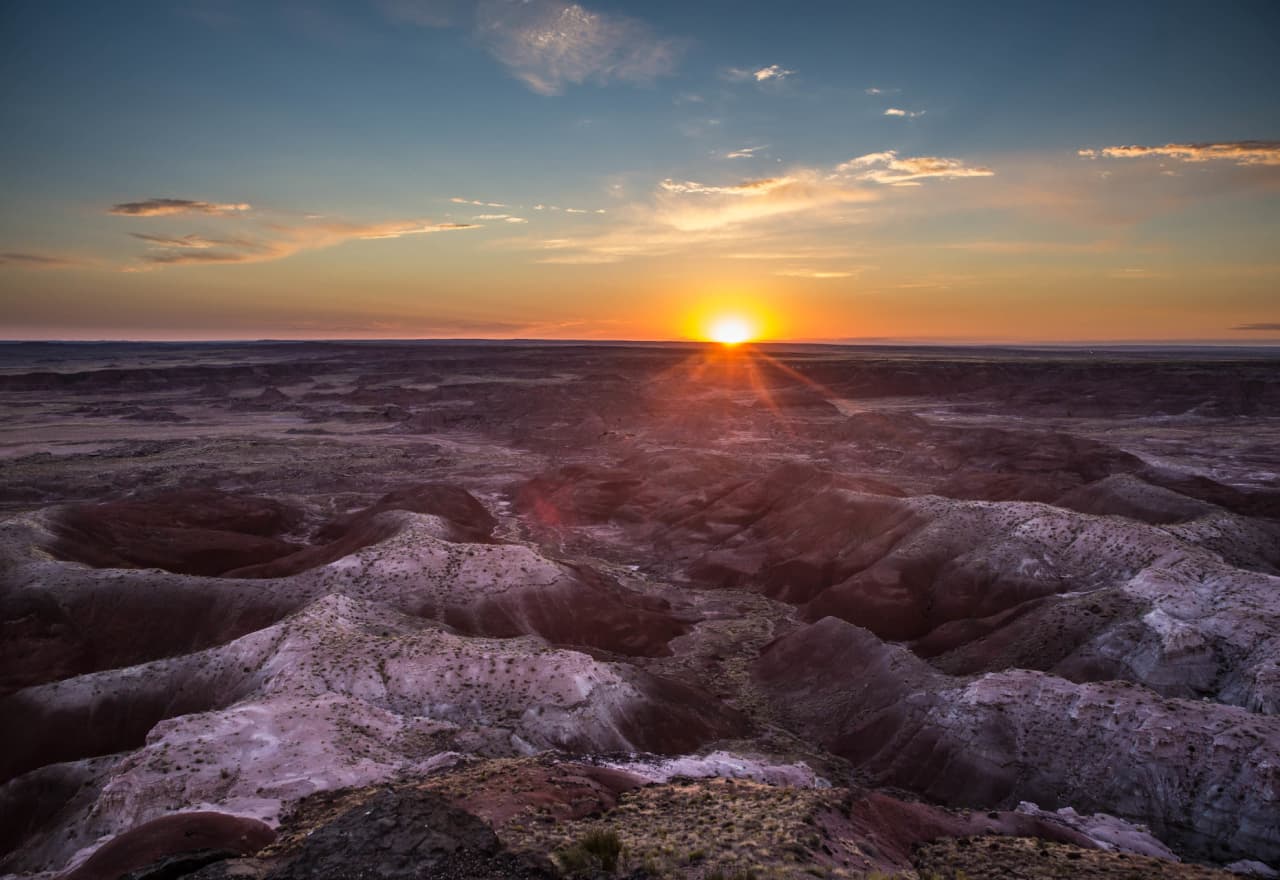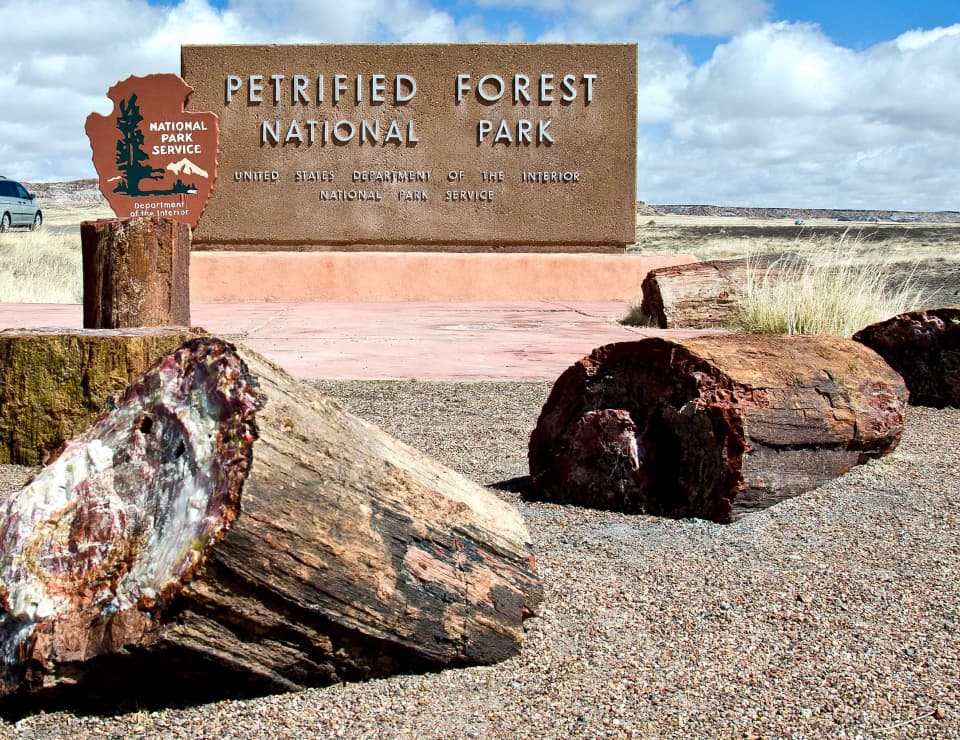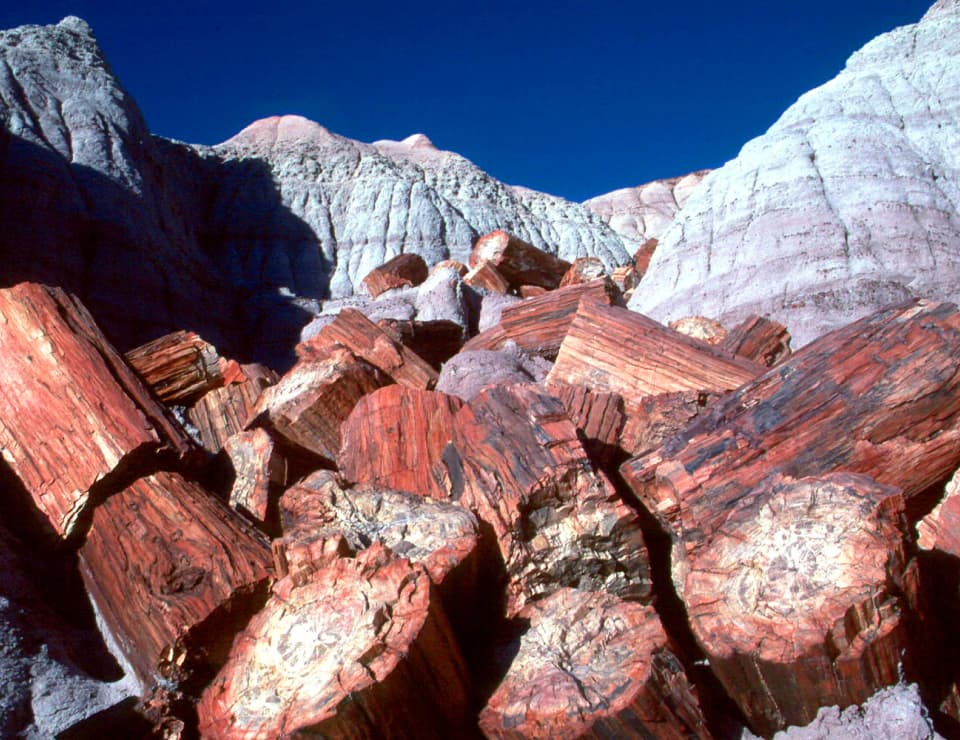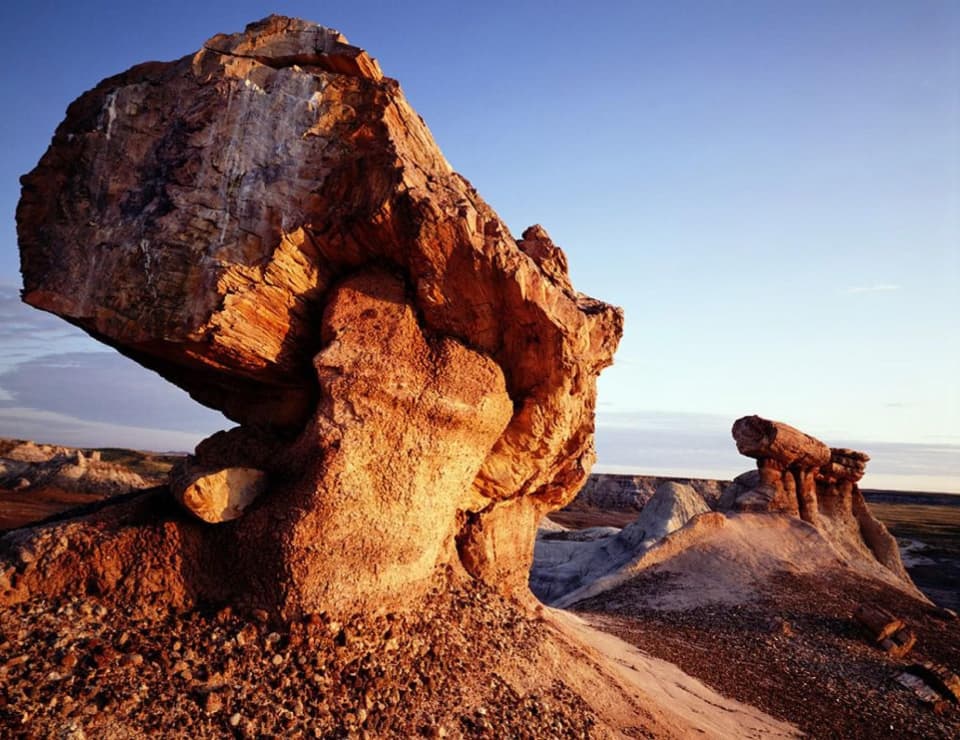Book Mobile Pet Grooming Las Vegas, NV Petrified Forest National Park

The Petrified Forest National Park is a 230-square-mile park with one of the world's largest and most colorful concentrations of petrified wood. The park also preserves fossils, badlands, grasslands, and ancient Native American sites. It is a place where you can learn about the history of life on Earth, enjoy scenic views, and have fun with your pet.
We will tell you everything you need to know about visiting the Petrified Forest National Park with your pet. We will cover the park's history, the rules and regulations for pets, the flora and fauna you can see, and some tips on caring for your dog or cat at the park. We will also share some exciting facts to make your visit more enjoyable.
Praise from our satisfied customers:

History
The park's name comes from the petrified, fossilized wood turned into stone by minerals over millions of years. The wood comes from ancient trees that lived in a tropical forest about 225 million years ago during the Triassic Period. These trees were buried by volcanic ash and sediment and then infiltrated by silica-rich groundwater, replacing organic matter with quartz crystals. The crystals preserved the shape and texture of the wood but also added different colors depending on the minerals present.
The park also contains fossils of animals and plants that lived in the Triassic Period, such as dinosaurs, reptiles, amphibians, fish, insects, ferns, and cycads. These fossils are displayed at the Rainbow Forest Museum and the Painted Desert Visitor Center. The park also has a paleontology lab where scientists study and prepare fossils for research and exhibition.
The park also has a rich human history that spans over 13,000 years. The park has evidence of Paleo-Indian hunters, Archaic gatherers, Ancestral Puebloan farmers, Navajo shepherds, Spanish explorers, American settlers, and Route 66 travelers. Some of their artifacts and structures are at Puerco Pueblo, Agate House, Newspaper Rock, and Painted Desert Inn.
Petrified Forest National Park with Pets
Pets are allowed on:
All paved roads and parking areas
All designated trails
The wilderness areas (with a free permit)
The Painted Desert Inn National Historic Landmark
The picnic areas
Pets are not allowed on:
The shuttle buses
The buildings (except for service animals)
The off-trail areas (except for wilderness permit holders)
Some general tips:
Keep your pet on a leash no longer than six feet at all times
Do not leave your pet unattended in vehicles or campsites
Pick up and dispose of your pet's waste in trash cans
Provide plenty of water and shade for your pet
Avoid walking on hot pavement or sharp rocks that can hurt your pet's paws
Respect wildlife and other visitors by keeping your pet quiet and under control
Follow all park signs and regulations

Flora and Fauna
Some of the plants you may see in the park include:
Grasses: The park has more than 100 species of grasses, some of which are native and some of which are introduced. Grasses provide food and shelter for many animals in the park.
Cacti: The park has several types of cacti, such as prickly pear, cholla, hedgehog, and pincushion. Cacti can survive in dry conditions by storing water in their stems and leaves.
Wildflowers: The park has a variety of wildflowers that bloom in different seasons. The most common are desert marigold, Indian paintbrush, globemallow, and penstemon.
Mammals: The park has more than 50 species of mammals, ranging from small rodents to large ungulates. The most common ones are pronghorn antelope, mule deer, coyote, bobcat, and black-tailed jackrabbit.
Birds: The park has more than 200 species of birds, some of which are resident and some of which are migratory. The most common ones are raven, red-tailed hawk, western meadowlark, horned lark, and mountain bluebird.
Reptiles: The park has more than 20 species of reptiles, primarily lizards and snakes. The most common ones are collared lizards, whiptail lizards, western rattlesnakes, gopher snakes, and bullsnakes.

Cacti have sharp spines that can injure your pets if they touch or try to eat them.
Snakes can bite your pets if they get too close or provoke them. Some snakes are venomous and can cause severe harm or death.
Coyotes and bobcats can prey on your pets if they are small or unattended. They may also carry diseases such as rabies or distemper.
To protect your pets from these dangers, follow these guidelines:
Keep your pets on a leash at all times. This will prevent them from wandering off or chasing wildlife.
Avoid walking your pets near cacti or other prickly plants. If they get spines in their fur or skin, remove them carefully.
Taking Care of Your Dog
However, you'll need to follow some rules to keep your dog and the park safe:
Keep your dog on a leash at most six feet.
Pick up your dog's waste and dispose of it in trash cans.
Do not leave your dog unattended in your car or anywhere else.
Keep your dog away from wildlife and plants.
Bring plenty of water and snacks for your dog.
Avoid walking on hot or sharp rocks that can hurt your dog's paws.
Taking Care of Your Cat
If you decide to bring your cat to Petrified Forest National Park, you'll need to:
Keep your cat inside a carrier or crate at all times.
Do not leave your cat unattended in your car or RV.
Provide enough ventilation, water, food, and litter for your cat.
Monitor your cat's health and behavior.
Consider using a harness or leash to take your cat outside for a short walk.

Interesting Facts
The park was established in 1906 by President Theodore Roosevelt as a national monument. It became a national park in 1962.
The park is named after its petrified wood. Still, it also contains fossils of other plants and animals from the Triassic Period, about 200 million years ago. These fossils include ferns, cycads, ginkgoes, dinosaurs, crocodiles, fish, amphibians, insects, and more.
The park is part of the Painted Desert, a region of colorful badlands that stretches across northern Arizona and New Mexico. The colors come from iron and manganese oxides that oxidize in different ways.
The park is located along historic.